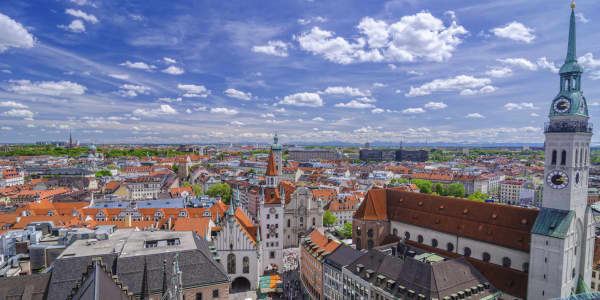Anyone living in a large, bustling city will have experienced the manic crush of rush hour and the overwhelming congestion it can bring to a city's roads. Attempts to reduce gridlock have included everything from congestion charges, such as in London, to public bike schemes, as seen in Buenos Aires, Paris and Hangzhou, China.
This January, Tallinn, Estonia, took a radical step in its efforts to reduce traffic jams, and became the first capital in the European Union to offer its residents free public transport. To travel free of charge, users are required to be registered as residents of Tallinn and pay a modest 3 euros ($4) to obtain a travel card. Last month Tallinn extended the scheme to its commuter trains.
While the initiative will cost the city around 12 million euros a year in lost fares, authorities in Tallinn argue that free transport offers several key benefits.
(Read more: Musk unveils plans for $10 billion Hyperloop transportation system)
"We win more than lose," Edgar Savisaar, Mayor of Tallinn, said in May. "First of all, citizens have more mobility options in town. Secondly, there are environmental benefits, as air quality is getting better. Thirdly, there are major improvements in the traffic flow."
What could free public transport offer to other cities around the world? "You would make some direct operational savings by removing the complexity of the ticketing system, where you have cash payments that slow buses down," Peter White, Professor of Public Transport Systems at the University of Westminster, told CNBC.com.
(Read more: Worst City for Traffic Congestion in Europe Named)
"The other two benefits would first of all be to low-income people, whose mobility would be improved, giving them access to jobs, health facilities and so on by removing financial constraints," he added. "Secondly, there would be some prospect of a modal shift, in particular diverting people from cars to a mode of transport with less energy use and emissions."
While the congestion and mobility arguments are strong, free public transport raises several concerns. "You have to finance all of the costs of free travel," White said. "One of the dangers – as we have in Britain at the moment with free travel for older people – is that it can take a lot out of the available public budget for transport," he said. "You may end up with a system that's free but offering a rather poor quality of service if you can't afford to replace vehicles, offer better wages to drivers and so on."
If free public transport may not be a viable option for cities like London or New York – Tallinn has a population of just over 400,000 – there are other service options, White says. What could we expect to see in the future?
(Read more: Traffic Jams Boost Helicopter Travel in Brazil)
"The obvious potential is automation – trains without drivers – which you can see coming into a lot of metro systems now," White said.
"There are a couple of automated lines on the Paris Metro. These are lines with very high densities of movement and people are quite happy to ride on driverless trains which run every two minutes or at even closer intervals than that. There's the obvious labor cost saving of the driver, but you can also offer a very high frequency through the day. A lot of metro systems are either building their new lines as automated from the start, or as they modernize and upgrade the older lines, they're doing that for automated operation. "
Follow us on Twitter: @CNBCWorld




